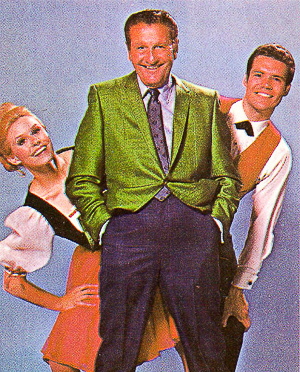
The syndicated version of the program aired from 1971 to 1982. Eastern Time on Saturdays over some of the ABC affiliates on which he had previously appeared, along with some stations affiliated with other networks and some independent television stations. When the show was canceled by the head of programming there, Welk formed his own production company and continued airing the show, on local stations and, often from 7 to 8 P.M. The show also left the Prospect and Talmadge studios between 19, returning to the Hollywood Palace for one season, then moving to CBS's Television City studios in 1977 and staying for two seasons, before coming back to the Prospect and Talmadge studios in 1979 and remaining there for the rest of its run. Once a couple of studios at the ABC Prospect and Talmadge facilities had been converted to color in 1966, the show moved back there.
#1968 LAWRENCE WELK CAST TV#
The 1965–66 season was taped at the Hollywood Palace because that was ABC's only West Coast TV studio at the time equipped for live or taped color production Welk had insisted that the show go color in 1965 because he believed that being broadcast in color was critical to the continued success of his program. For 23 of its 27 years on the air, the show would originate there.

The show made its national television debut on ABC Television on July 2, 1955, and was initially produced at the Hollywood Palladium, moving to the ABC studios at Prospect and Talmadge (stage 5) in Hollywood shortly afterwards. In 1954, Paramount announced plans to distribute the show nationwide, plans that never materialized due to Paramount's feuds with DuMont Television Network that led to the collapse of both. The original show was broadcast from the since-demolished Aragon Ballroom at Venice Beach. On May 11, 1951, The Lawrence Welk Show began as a local program on KTLA in Los Angeles, the flagship station of the Paramount Television Network and the first commercial television station in California and west of the Mississippi River.

1.1 Move to syndication and public television.In place of the commercials, newer performance and interview clips from the original stars and/or a family member of the performers are included these clips are occasionally updated. These airings incorporate an original program-usually, a color broadcast from 1965 to 1982-in its entirety. Repeat episodes are broadcast in the United States by Public Broadcasting Service (PBS) stations.
#1968 LAWRENCE WELK CAST SERIES#
The series aired locally in Los Angeles for four years, from 1951 to 1955, then nationally for another 16 years on ABC from 1955 to 1971, followed by 11 years in first-run syndication from 1971 to 1982. The Lawrence Welk Show is an American televised musical variety show hosted by big band leader Lawrence Welk. Adios, Au Revoir, Auf Wiedersehen (1971-1982)Īmerican Broadcasting Company (1955–1971) On Welk's longevity, Armisen asked, "Could it be seen as something a little bit like.

They also discuss their own personal memories of the show, and how the man who seemed like the ultimate square was anything but. On this week's episode of "Mobituaries," "Sunday Morning" correspondent Mo Rocca sits down with former "Saturday Night Live" cast member and star of HBO's "Los Espookys" Fred Armisen (who famously parodied Welk on "SNL") to memorialize the accordionist, band leader and television host. He would make a name for himself across the Upper Midwest leading a ten-piece band called the Hotsy-Totsy Boys, and in 1951 "The Lawrence Welk Show" began as a local program on KTLA in Los Angeles. In exchange, Welk worked on the farm until he was 21, turning over any monies earned from gigs.

His father sold a cow to pay for Welk's first accordion. Welk was raised on a farm in Strasburg, North Dakota, the child of German immigrants who made their way to the United States by way of the Ukraine.


 0 kommentar(er)
0 kommentar(er)
